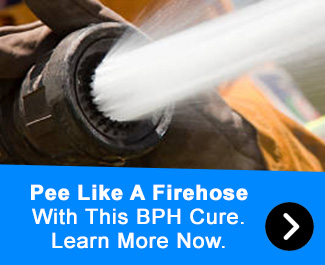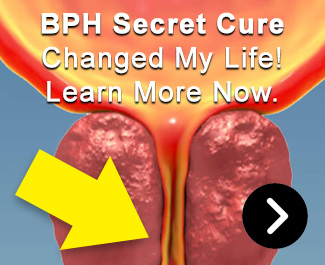16. Avoid Alcohol And Caffeine
LEARN MORE NOW
Prostate Problems? Top Urologist Reveals Proven Treatment You Can Do At Home. SEE IT
Professor: "Mind-Blowing Enlarged Prostate-Reducing Secret Changed My Life". SEE IT
Top Doctor Reveals Potent All-Natural Solution To Stop Prostate Problem Progression. SEE IT
100% Natural Prostate Reduction Remedy Allows Men To Pee 2.5X Faster. SEE IT
Doctors Warn: Beware Of Prostate Drugs. Do This Proven Natural Remedy Instead. SEE IT
Caffeine and alcohol are diuretic substances that constrict the bladder and irritate the prostate. Alcohol can exacerbate an enlarged prostate since it hinders the prostate muscle from relaxing. This makes it hard for the urine to pass, which eventually can contribute to urinary incontinence.
Caffeine in coffee can increase urinary urgency and frequency, as well as cause irritation and pain.
15. Avoid Drinking Too Much Water At One Time
In order to help reduce the symptoms associated with an enlarged prostate, it is best to drink smaller amounts of water at regular intervals. Avoiding drinking too much water, particularly after dinner and before bedtime can prevent the individual from going to the bathroom often.
An individual with an enlarged prostate finds it difficult to urinate. Hence, frequent visits to the bathroom will be burdensome. Drinking smaller amounts of water will increase the individual’s ability to go longer between bathroom trips.
14. Empty Out Of Bladder Right Away
Holding pee is a bad habit and can have negative consequences. Leaving the bladder un-emptied can result in a number of health issues, including kidney stones.
Holding pee can also lead to urinary tract infections, which can be extremely dangerous. It’s best to empty out the bladder soon as the urgency to pee is felt.
13. Regular Bathroom Schedule
It’s recommended to keep a regular bathroom schedule to empty out the bladder. Going to the bathroom every 2 to 4 hours can help even if there’s no urge to pee.
An enlarged prostate may cause bowel symptoms like frequent or infrequent bowel movements. Keeping a regular schedule can also boost bowel movements to avoid constipation.
12. Medications
Prostate Problems? Top Urologist Reveals Proven Treatment You Can Do At Home. SEE IT.
Professor: "Mind-Blowing Enlarged Prostate-Reducing Secret Changed My Life". SEE IT.
Top Doctor Reveals Potent All-Natural Solution To Stop Prostate Problem Progression. SEE IT.
100% Natural Prostate Reduction Remedy Allows Men To Pee 2.5X Faster. SEE IT.
Doctors Warn: Beware Of Prostate Drugs. Do This Proven Natural Remedy Instead. SEE IT.
Medications such as alpha-blockers help relax muscle fibers in the prostate, easing symptoms. Examples of alpha-blockers are terazosin, tamsulosin, alfuzosin, doxazosin, and prazosin. Alpha blockers have been shown to shrink the prostate in some men.
Other medications include 5-alpha reductase inhibitors, PDE5 inhibitors, antimuscarinic drugs, and desmopressin. Nonetheless, it is best to get with a doctor to see which medication works best.
11. Surgery
Surgery can help reduce the frequency and weak flow of urine. It can also help relieve symptoms related to incomplete emptying of the bladder. Surgical procedures to treat enlarged prostate are minimally invasive, such as transurethral needle ablation (TUNA).
These procedures involve the use of radio waves to burn the excess tissue inside the prostate. There is minimal bleeding, and most people see results almost immediately after the procedure.
10. GreenLight Laser Therapy
GreenLight Laser Therapy is an excellent treatment option for patients suffering from an enlarged prostate. It works by delivering laser energy through a small fiber placed in the urethra through a cystoscope.
The energy destroys the enlarged prostate tissue and promotes urinary flow. The procedure generally takes a few hours and results in relief from symptoms within a day. GreenLight laser therapy is a less invasive alternative to surgery to treat an enlarged prostate.
9. Hormone Therapy
Hormone therapy targets the production of male sex hormones called androgens. These hormones are produced in the testicles and the adrenal glands. By blocking their production, hormone therapy can reduce the fuel that prostate cells need to grow.
In high-risk cases, patients with an enlarged prostate may be eligible for hormone therapy. These therapies are generally given in conjunction with radiation therapy or surgery.
(continued next page)
Prostate Problems? Top Urologist Reveals Proven Treatment You Can Do At Home. SEE IT.
Professor: "Mind-Blowing Enlarged Prostate-Reducing Secret Changed My Life". SEE IT.
Top Doctor Reveals Potent All-Natural Solution To Stop Prostate Problem Progression. SEE IT.
100% Natural Prostate Reduction Remedy Allows Men To Pee 2.5X Faster. SEE IT.
Doctors Warn: Beware Of Prostate Drugs. Do This Proven Natural Remedy Instead. SEE IT.


